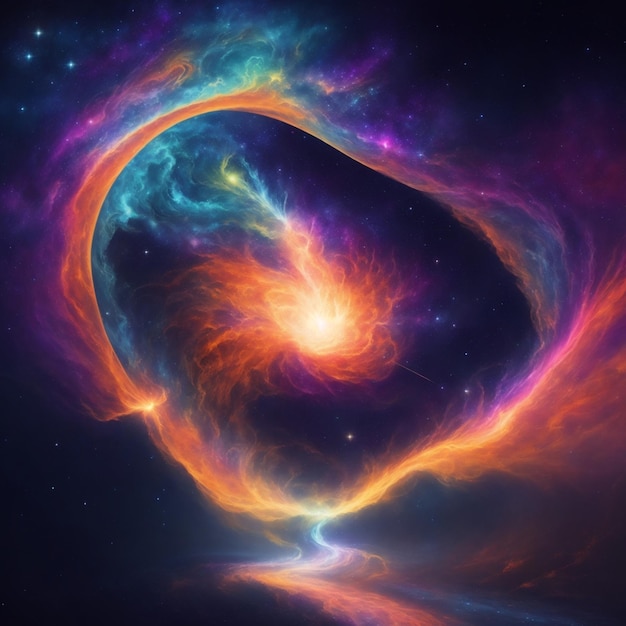Cosmic rays are enigmatic entities that traverse the universe, stretching the limits of our understanding of high-energy physics and astrophysical phenomena. They are often referred to colloquially as “ghost particles”—a term shrouded in mystery and intrigue. This nomenclature evokes an array of questions: Why are cosmic rays labeled as ghost particles? Do they really possess supernatural qualities? This exploration will delve into the origins of cosmic rays, their elusive nature, and the scientific endeavors undertaken to better comprehend these ethereal particles.
Cosmic rays primarily consist of high-energy protons and atomic nuclei that originate from dramatic astrophysical events, such as supernovae explosions and active galactic nuclei. Unlike the particles we encounter in our daily lives, cosmic rays can exhibit energies that surpass one quintillion electron volts. An intriguing feature of cosmic rays is their ability to traverse vast interstellar distances without significant interactions with matter. This characteristic raises an immediate query concerning the purported moniker of “ghost particles.” Are they truly spectral, or do they simply evade detection?
The designation of cosmic rays as ghost particles arises primarily from their interaction—or lack thereof—with the universe surrounding us. When cosmic rays enter the Earth’s atmosphere, their interactions are largely limited to high-altitude layers. This phenomenon is primarily attributable to their extremely high velocities and the remarkable ability to avoid scattering or absorption when encountering matter. In essence, cosmic rays appear to slip through the fabric of our planetary environment, evoking an image of a ghost freely moving through solid walls.
Interestingly, the invisibility of cosmic rays to human perception has fostered an extensive research history. Scientists have employed sophisticated detectors and observation techniques to capture elusive cosmic events. The initial detection of cosmic rays dates back to 1912, when Viktor Franz Hess ascended in a balloon to probe the atmosphere’s ionization levels. His pioneering experiments revealed that ionization increased with altitude, implicating a source beyond Earth. Thus, the curtain was drawn back on this cosmic mystery, yet many questions lingered.
One challenge facing researchers is the identification of the sources contributing to the cosmic ray population. Despite numerous hypotheses, pinning down the exact origins has remained an elusive endeavor. This conundrum amplifies the ghostly persona of cosmic rays; much like phantoms, they manifest without clear antecedents. Current theories suggest that cosmic rays originate from various astrophysical phenomena, including supernova remnants, pulsars, and even black holes, yet a comprehensive understanding remains frustratingly out of reach.
The energy spectrum of cosmic rays is another critical aspect contributing to their ghostly character. The distribution of energies is non-uniform and demonstrates a power-law behavior, hinting at underlying processes that govern their acceleration. High-energy cosmic rays, often labeled as ultra-high-energy cosmic rays (UHECRs), can exceed energies that defy conventional physics models. The ability of these particles to accumulate such extreme energies raises a fundamental question: how do these ghostly messengers become so energized? Furthermore, can we ever hope to trace their origins with adequate precision?
Moreover, cosmic rays give rise to secondary particles upon collision with atmospheric nuclei, leading to cascades of particle interactions that result in observable phenomena such as air showers. These cascades, produced during cosmic ray interactions, starkly contrast with the initial particles themselves, thereby complicating the attribution of specific cosmic events. The complexity of detecting and quantifying secondary particles adds another layer to the puzzle, enhancing the intrigue surrounding the ghost-like characteristics of cosmic rays. Even when we think we can grasp their nature, they elude clear categorization and direct observation.
With advancements in technology, researchers have developed a variety of detection methods to unravel the mysteries posed by cosmic rays. Ground-based observatories, such as the Pierre Auger Observatory and the Telescope Array, employ elaborate arrays of detectors to measure air showers produced by high-energy cosmic rays. Space-based instruments, like the Alpha Magnetic Spectrometer aboard the International Space Station, provide critical data that contribute to our understanding. These efforts signify the scientific community’s commitment to uncovering the elusive characteristics of cosmic rays, but one must wonder: might we ever fully disentangle the threads of this cosmic enigma?
In exploring the science of cosmic rays, we also encounter philosophical implications related to the nature of existence and perception. The concept of ‘ghosts’ often invokes fears and shivers, but in the realm of particle physics, it tantalizingly challenges our notions of visibility and reality. Cosmic rays push the boundaries of experimental validity, prompting us to consider how much of the universe remains shrouded in darkness, awaiting illumination from scientific inquiry.
In conclusion, the appellation of cosmic rays as ghost particles does not merely reflect their elusive physical nature; it embodies our ongoing quest to decipher the cosmos. Through relentless investigation, we strive to lift the veil obscuring these enigmatic messengers from the universe, while confronting the limitations of our tools and knowledge. As our capabilities expand, the dream of demystifying cosmic rays approaches tantalizingly closer—yet one must ponder: will the ghosts of the cosmos ever reveal their true selves, or will they remain forever shrouded in mystery?












